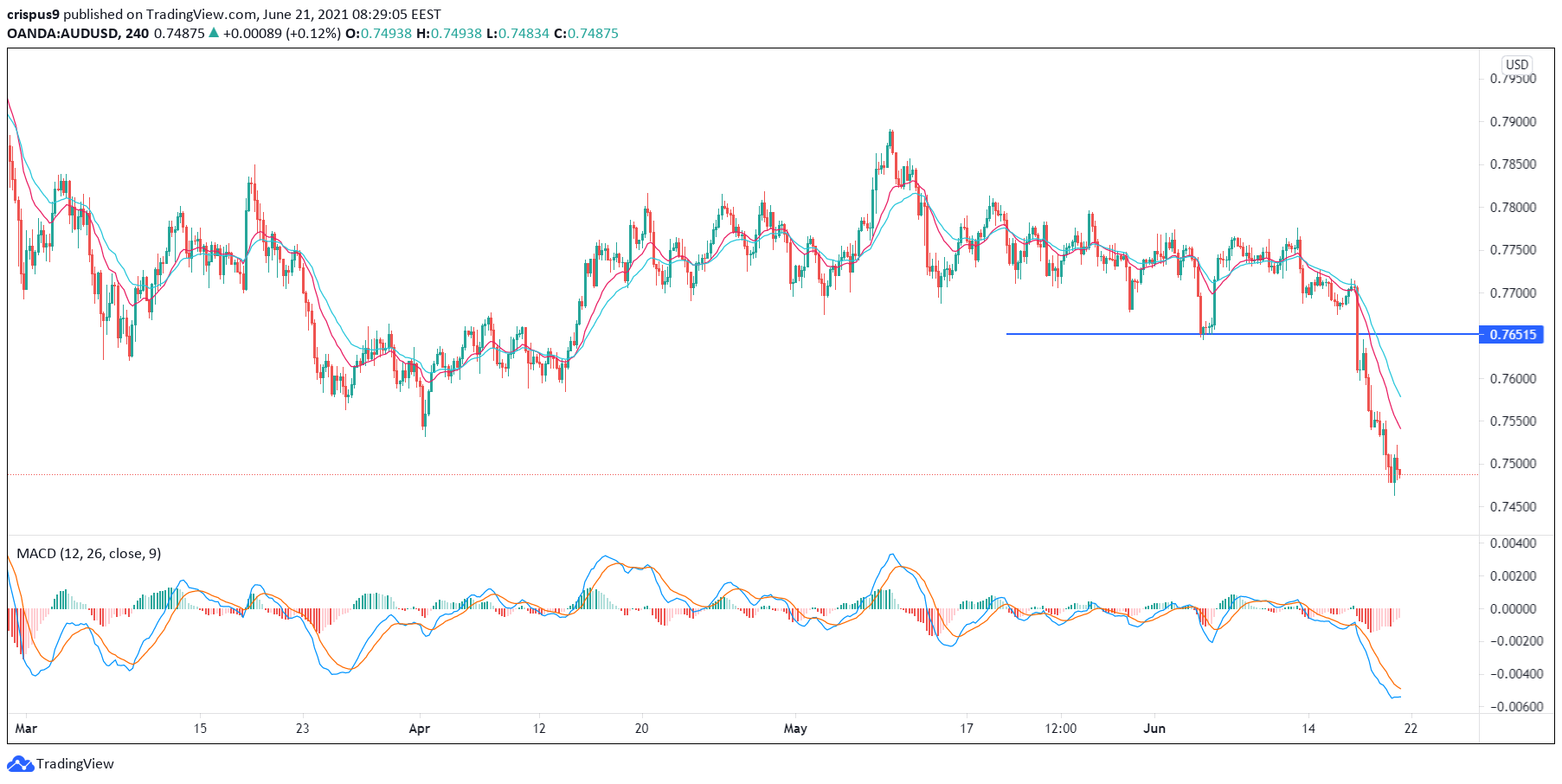Bearish View
- Set a sell-stop at 0.7465 (last week’s low).
- Add a take-profit at 0.7400 and a stop-loss at 0.7525.
- Timeline: 1-2 days.
Bullish View
- Set a buy-stop at 0.7525 and a take-profit at 0.7600.
- Add a stop-loss at 0.7465.
The AUD/USD pair is still under pressure after the Fed decision and after commodity prices continued to drop. The pair is trading at 0.7505, which is a few points above last week’s low of 0.7467. It is also about 4.8% below its highest level this year.
Australian Retail Sales
Australia’s retail sales rose by 0.1% in May this year, according to a preliminary report by the Australian Bureau of Statistics (ABS). The slowdown in retail spending was mostly because of Victoria, where all industries suffered a slowdown as the region moved to lockdowns. Food retailing increased in the state as families stockpiled. The decline in Victoria was offset by rises in Queensland and Western Australia.
The AUD/USD is still reeling from the recent Federal Reserve decision. The pair has dropped by more than 2.7% after the Fed sounded hawkish. The bank decided to leave interest rates unchanged at the range of 0.0% and 0.25%. It also left its quantitative easing policy unchanged at $120 billion per month. Still, the bank’s dot plot signaled that more policymakers were optimistic that the first interest rate hike will happen in 2023. This will be earlier than the previous estimate of a rate hike in 2024. The decision pushed the US dollar to the highest level in months.
Meanwhile, the performance of commodities has also affected the Australian dollar. In the past few weeks, the prices of top Australian commodities like iron ore and copper have dropped substantially from their highest point this year. This decline happened after signs emerged that the Chinese economy is slowing. Also, the ongoing pressure by the Chinese government has helped to push prices lower.
AUD/USD Technical Analysis
The four-hour chart shows that the AUD/USD pair was forming a head and shoulders pattern before last week’s Fed decision. The neckline of this pattern was at 0.7650. The pair managed to drop below this neckline last week. It has also moved below the 25-day and 50-day moving averages.
At the same time, the two lines of the MACD indicator have moved below the neutral line while the Relative Strength Index (RSI) has declined to the oversold level. Therefore, the pair’s path of least resistance is lower as the Fed turns hawkish. If this happens, the next key level to watch will be the support at 0.7400.

